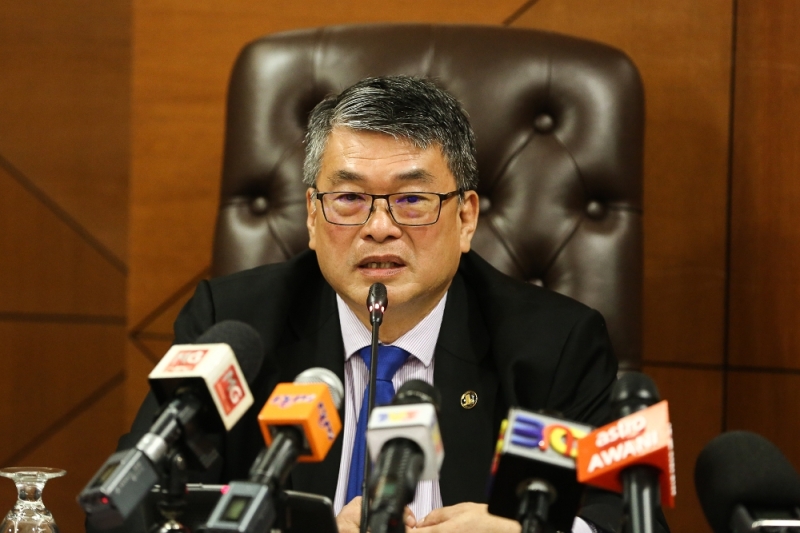THE COVID-19 crisis has heralded huge disruptions to the daily life of citizens, businesses and governments, which made it necessary for the Government to react in unprecedented ways, introducing novel responses at breakneck speed including instituting lockdowns and Emergencies.
However, as the Emergency phase starts to fade and lockdown measures become less restrictive, governments worldwide have started to devise recovery plans from the pandemic.
As a measure to steer the nation towards a path of recovery from this pandemic, the Malaysian Government launched a National Recovery Plan (NRP), which is a four-phase exit strategy from the COVID-19 crisis.
In this roadmap, the Government will consider moving on to phase four, or the final phase, when the average daily COVID-19 cases fall below 500, the healthcare system is at a safe level with ICU bed usage at a sufficient level and 60% of the population have already received two doses of COVID-19 vaccines.
The National COVID-19 Immunisation Programme forecasted that these numbers may be achieved by October 2021.
As nations strive to mitigate the COVID-19 pandemic, experts are drawing the attention of governments to more serious challenges looming ahead.
International Finance Corporation (IFC) environmental and social consultant Lama El-Hatow, highlighted that once after COVID-19 comes to an end, other crisis that are anticipated to follow include economic recession, climate crisis and the collapse of biodiversity.

Climate crisis and COVID-19 cannot be addressed separately. If they are, the repercussions of the climate crisis will be harsher than before when the pandemic ends.
National, public sector and social innovation
In recognition of the critical importance of innovation not only in industries, businesses, the public sector and society, countries have adopted various approaches at a national level to foster technological and social innovation in the public sector.
For the former, they range from developing whole-of-government innovation strategies that address the role of the public sector as an innovator.
The Organisation for Economic Co-operation and Development (OECD) defines public-sector innovation as significant improvements to public administration and/or services.
Pre-crisis had allowed socio-economic plans to be developed in a linear trajectory expecting no crises nor shocks to public sectors such as health, judiciary and education and sectors of the economy as well as society.
Arising from the pandemic’s worsening condition and striving to navigate the nation to a path of recovery, the NRP focused on indicators and plans pertaining to mitigating the COVID-19 infections.
In view of the global recognition where dire consequences are expected if climate change is not addressed and mitigated, it is critical that the Government introduces innovation in its social economic planning and in the development of the NRP by incorporating Scenario Planning as a guiding framework.
Malaysia has experienced extreme weathers of severe heatwaves, droughts and floods/flooding that had severely impacted society.
Thus it is necessary for the Government to review the current NRP with a view of further enhancing it by applying Scenario Planning to develop strategic scenarios that not only involves expectation of recovery but also includes projected impact of climate change in parallel and incorporate this into the nation’s social economic planning as well as the NRP.
This would constitute national and public-sector innovation for Socio Economic Planning and the NRP in view that Scenario Planning was introduced by global business Shell and is now being applied at national level by the public sector.
Innovation – new ways of engaging with stakeholders
Innovation through investing in relationships and partnerships with stakeholders, businesses, the public and civil society organisations is fundamental to a government’s ability to adjust to a changing context and in the delivery of enhanced public services.
Traditionally, socio-economic recovery plans were discussed and developed by and with ministry officials and officers.
The OECD advocated that in the Governments’ plan for the recovery, citizen participation in this planning exercise can ensure that recovery strategies are inclusive and respond to citizens’ needs and expectations.
Thus the Government should also provide opportunities for citizens to offer their inputs and views of the NRP.
The COVID-19 pandemic also serves as a key catalyst for government transformation, as well as national and public-sector innovation. – Aug 16, 2021
Sheriffah Noor Khamseah Al-Idid is a former special officer to the First Science Advisor to Malaysia’s Prime Minister and alumna of Imperial College, University of London, United Kingdom.
The views expressed are solely of the author and do not necessarily reflect those of Focus Malaysia.










